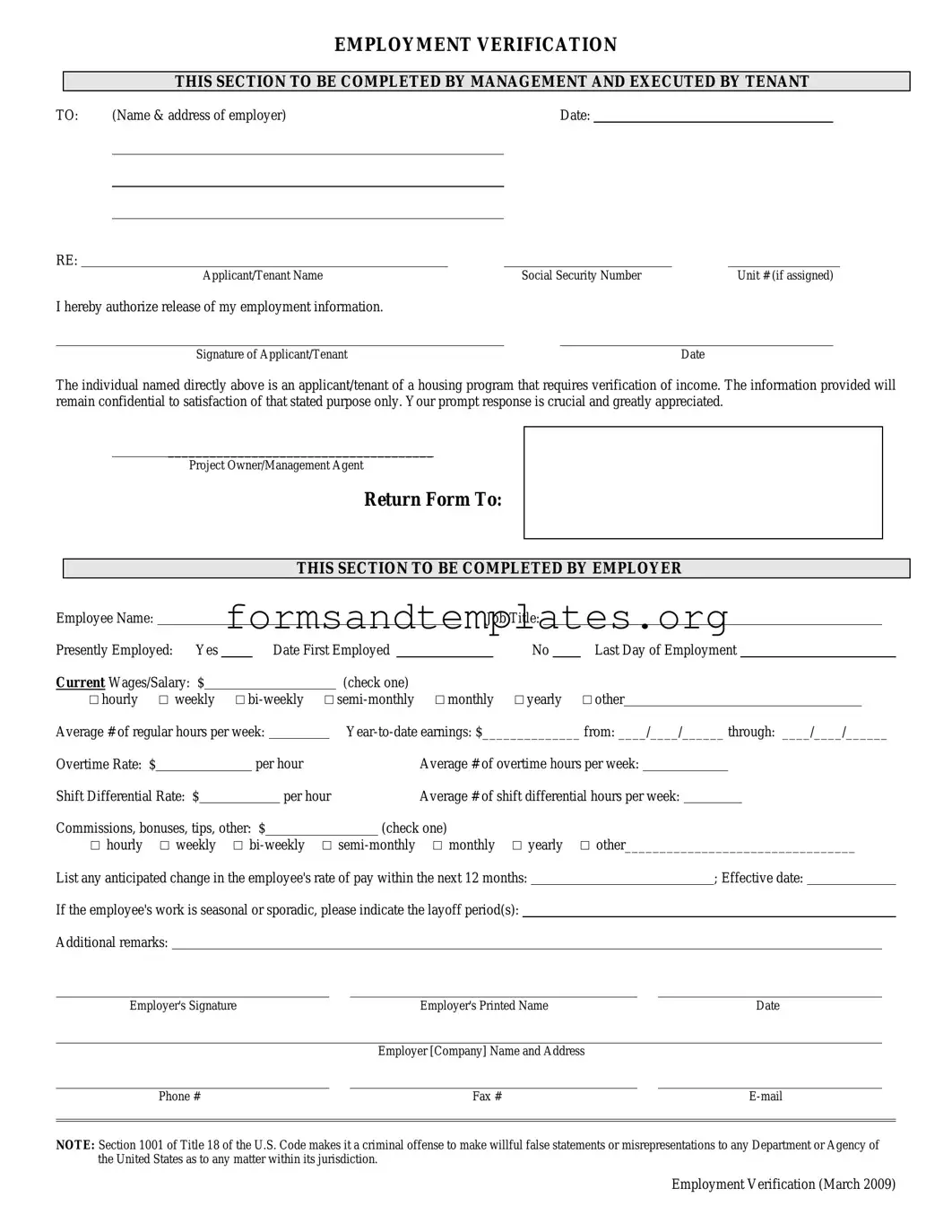An Employment Verification Form is a document used by employers to confirm an individual's employment status. It typically includes details such as job title, dates of employment, and salary information. This form is often requested by lenders, landlords, or other entities requiring proof of income or employment.
This form serves several important purposes:
-
It helps potential employers verify a candidate's work history.
-
Lenders may require it to assess an applicant's financial stability.
-
Landlords often ask for it to ensure tenants can afford rent.
In essence, it provides assurance to third parties about an individual’s employment and income status.
To complete the form, follow these steps:
-
Provide your personal information, including your full name and contact details.
-
Fill in your employment details, such as the name of your employer, job title, and dates of employment.
-
Sign and date the form to authorize the release of your employment information.
Ensure all information is accurate to avoid delays in the verification process.
Typically, any individual or organization that requires proof of employment can request this form. Common requesters include:
-
Potential employers during the hiring process.
-
Lending institutions when processing loan applications.
-
Property managers or landlords when screening rental applications.
Always ensure that the request is legitimate and necessary.
The processing time can vary based on the employer's policies and workload. Generally, it can take anywhere from a few days to a couple of weeks. To expedite the process, provide all necessary information upfront and follow up if you haven’t received a response within a reasonable timeframe.
If your form is denied, first understand the reason for the denial. Common issues include:
-
Insufficient information provided.
-
Inaccurate employment details.
-
Employer policies that restrict verification.
Contact the requesting party to clarify the denial. You may need to provide additional documentation or corrections to resolve the issue.

